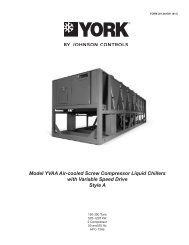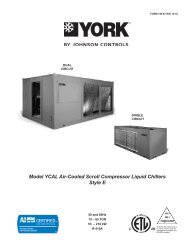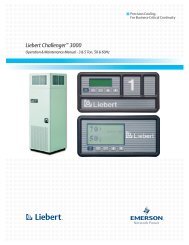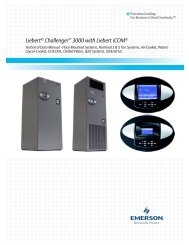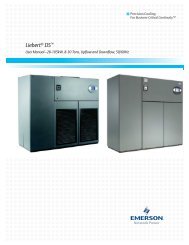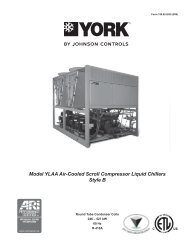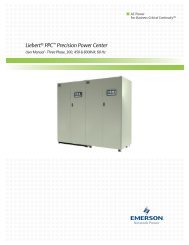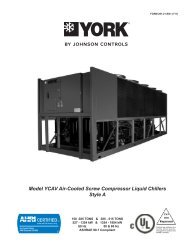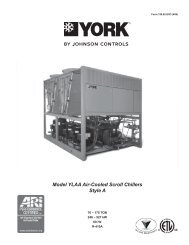Liebert Challenger 3000 with iCOM
Liebert Challenger™ 3000 with iCOM Installation Manual - 3 ... - DCES
Liebert Challenger™ 3000 with iCOM Installation Manual - 3 ... - DCES
- No tags were found...
Create successful ePaper yourself
Turn your PDF publications into a flip-book with our unique Google optimized e-Paper software.
Air-Cooled Models—Self-Contained CompressorVariable Fan Speed Control Materials Supplied•Built-in, pre-wired condenser control box• Air-Cooled condenser• Piping access cover to be reinstalled when piping is complete• Bolts—four per leg (3/8" x 5/8")• Terminal block for two-wire, 24V interlock connection between unit and condenser• Condenser legs—four <strong>with</strong> 1-fan, 2-fan and 3-fan models; six <strong>with</strong> 4-fan modelsVariable Fan Speed Control Leak Check and Evacuation ProcedureProper leak check and evacuation can be accomplished only <strong>with</strong> all system solenoid valves open andcheck valves accounted for.NOTESystems <strong>with</strong> a scroll or digital scroll compressor include a factory-installed check valve andan additional downstream Schrader valve <strong>with</strong> core in the compressor discharge line. Properevacuation of the condenser side of the compressor can be accomplished only using thedownstream Schrader valve. See piping schematic (Figures 15 and 16).1. If unit power is available, open the unit liquid line solenoid valves using the evacuation functionin the diagnostic section of the <strong>Liebert</strong> <strong>iCOM</strong> control (refer to the <strong>Liebert</strong> <strong>iCOM</strong> user manual,SL-18835). If unit power is not available, a field-supplied 24VAC / 75VA power source must bedirectly connected to each of the unit solenoid valves.2. For scroll and digital scroll compressors, connect refrigerant gauges to the suction rotalock valvesand discharge line Schrader valves (see Note above) on the compressor.3. Open the service valves and place a 150 PSIG (1034 kPa) of dry nitrogen <strong>with</strong> a tracer ofrefrigerant. Check system for leaks <strong>with</strong> a suitable leak detector.4. After completion of leak testing, release the test pressure (per local code) and pull an initial deepvacuum on the system <strong>with</strong> a suitable pump.5. After four hours, check the pressure readings and, if they have not changed, break vacuum <strong>with</strong>dry nitrogen. Pull a second and third vacuum to 250 microns or less. Recheck the pressure aftertwo hours. After completing this step, proceed to Variable Fan Speed Charging on page 28.27



